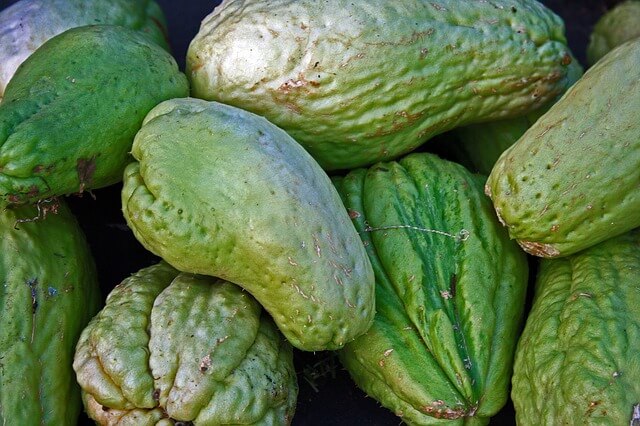What the bleep is chayote?
Recently, I was planning a dinner for some friends and I was trying to think of a vegetable side dish that I hadn’t served before. The dinner had a Mexican/Southwest flavor theme and it occurred to me that I should try chayote squash.
Now, I can’t remember ever preparing this vegetable before because I never knew how to cook it. But why not try something new? So I did a little searching for chayote recipes and found quite a variety: salads, soups, sautes, and stuffed. And it didn’t look too complicated. I settled on a salad that included cooked diced chayote, diced avocado, sliced strawberries, scallions, jalapeno pepper, salt & pepper and lime juice. It sounded unusual, but interesting, and it was pretty good!
Since then, I’ve done more research about this vegetable and it appears that I’ve been missing out on a great-tasting, easy-to-prepare veggie. So I’m planning to include it a lot more often in my future menus. I suspect many of you may be just like me – we’ve seen it in the supermarkets but ignored it for lack of familiarity. Hopefully, I can convince you to give it a try!
Some basic information about chayote
Origin: Mesoamerica (Mexico thru Central America); also native to the area around New Orleans.
Names: chayote, mirliton, alligator pear, vegetable pear
Description: a mild-tasting, pear-shaped, light green vegetable with a firm texture. A member of the squash family (Cucurbita). Can be smooth or grooved and is usually peeled for cooking. Can be eaten raw or cooked.
Selection: Choose firm chayotes and avoid any that are sticky or discolored.
Links to help you learn more about chayotes
Great video with Emeril Lagasse on how to prepare and cook chayotes
Links to a few recipes



